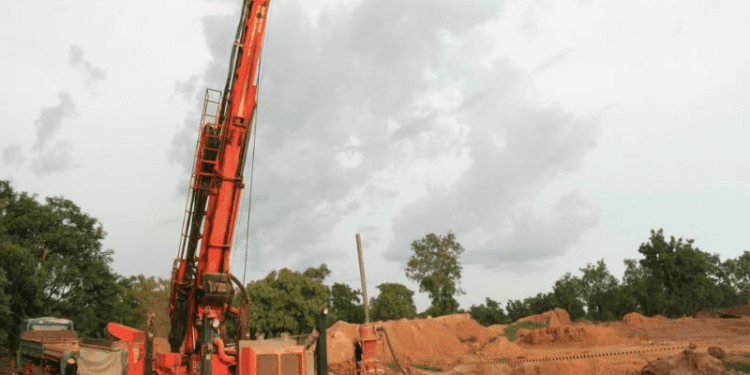1.Thanks for taking the time to chat with us today. To start off, can you give us a little background into Cardinal Resources, what you do and where you operate?
Cardinal Resources was listed on the ASX in 2011 and acquired its Ghanaian gold portfolio the following year. The main focus of the company is gold exploration and mine development in Ghana. We currently hold an interest in two project areas covering highly prospective Paleo‐Proterozoic granite‐greenstone belts. The Bolgatanga Project is located in northeast Ghana, which includes our flagship Namdini Gold Project, discovered in 2015, with a 5.1 Moz Ore Reserve sitting within a single open pit and the Subranum Project in southwest Ghana. We delivered our highly positive feasibility study into the planned development of Namdini in October 2019.
2.With regards to Ghana, Ghana has recently overtaken South Africa as Africa’s largest gold producing country. Why do you think that is and how has Cardinal’s experience been working there?
Southern Ghana hosts a number of world-class gold deposits and recent discoveries, and has enjoyed a long and successful track record of exploration and mining by foreign companies. By comparison, current gold production in South Africa is mainly from very deep, less profitable underground operations and is not attracting the same level of investor interest as Ghana.
Cardinal is operating in northern Ghana and is poised to become the first to develop a large-scale mine. We have been very fortunate to have benefited from overwhelming support from local communities and the Government of Ghana to advance Namdini towards production, which will deliver sustainable prosperity and opportunities to this region.
3. In general, how are the mining policies in Ghana and what is the country doing to help encourage mining and mining investment?
Large-scale mining has been conducted in Ghana for more than 100 years and it is considered to be a mature, stable jurisdiction. The mining policies and Government support in Ghana are competitive with other jurisdictions and considered reasonable, compared with the standards practiced in Australia, Canada, Chile for example.
4. 2019 was a great year for gold, how do you see 2020 shaping up?
Market volatility driven by a sluggish global economy, geopolitical risk and trade tensions will continue to reinforce the gold price. We remain bullish on gold in 2020, building on the strong sentiment established in 2019.
5. Following up on that, what are some of the catalysts that you see to a continued rising gold price? On the other hand, what are some of the threats to the gold price?
In my opinion, these market factors will continue to play out for some time yet. Gold was traditionally seen as a hedge for inflation, however in this current, very low interest rate environment we are also seeing gold behaving as hedge against currency. We continue to remain very positive about the gold price fundamentals going forward.
6. Cardinal is a dual-listed TSX and ASX company (CDV). Being listed on the two biggest mining exchanges in the world, what benefits do you get from the dual listing? How do you find that the exchanges differ from one another with regards to regulations, and more importantly, mining investment?
We are really fortunate to be listed in two jurisdictions that are very mining friendly and familiar with gold mining in Africa.
Cardinal already has a strong institutional investor base and the backing of a number of brokers in both Australia and Canada. Both markets are very resource-focussed and are a reliable source of equity capital, so it makes good sense to maintain an active presence. The TSX does, however, have a different compliance and reporting regime to the ASX.
7. When speaking with investors, what are the main messages you communicate about Cardinal and Ghana?
• ASX and TSX dual listed gold company
• Received award from PDAC 2019 for the discovery of the year (Namdini)
• 5.1Moz gold deposit in Ghana – the Feasibility Study is complete and the project is being upgraded through a Front End Engineering & Design (FFED) study, to prepare for project execution
• 421,000 oz produced in the first year alone with more than 1.1 million ounces scheduled for production in the first three years with an all-in sustaining cost of US$585/oz
• 287,000 oz average annual gold production over a 15‐year mine life with an all-in sustaining cost of US$895/oz
Namdini ranks amongst the world’s largest known, financially robust, undeveloped gold projects within a single open pit
8. To finish off, can you give us a quick outlook of how 2020 is going to look for Cardinal, what are the plans moving forward in the next 12 months?
Our main focus next year is to finalise the financing of the Namdini gold mine development following the delivery of our robust feasibility study in October. In conjunction with moving the Namdini towards a financial investment decision, work is continuing to de-risk project execution through the FEED study. We also continue to conduct further project optimisation and regional exploration work.
Exploration activities, including drilling, will recommence shortly to outline shallow, high grade deposits within trucking distance of Namdini to further enhance the project economics. We reported highly encouraging exploration results from shallow drilling at Ndongo East during 2019, providing strong encouragement that higher grade gold systems exist in the region.












